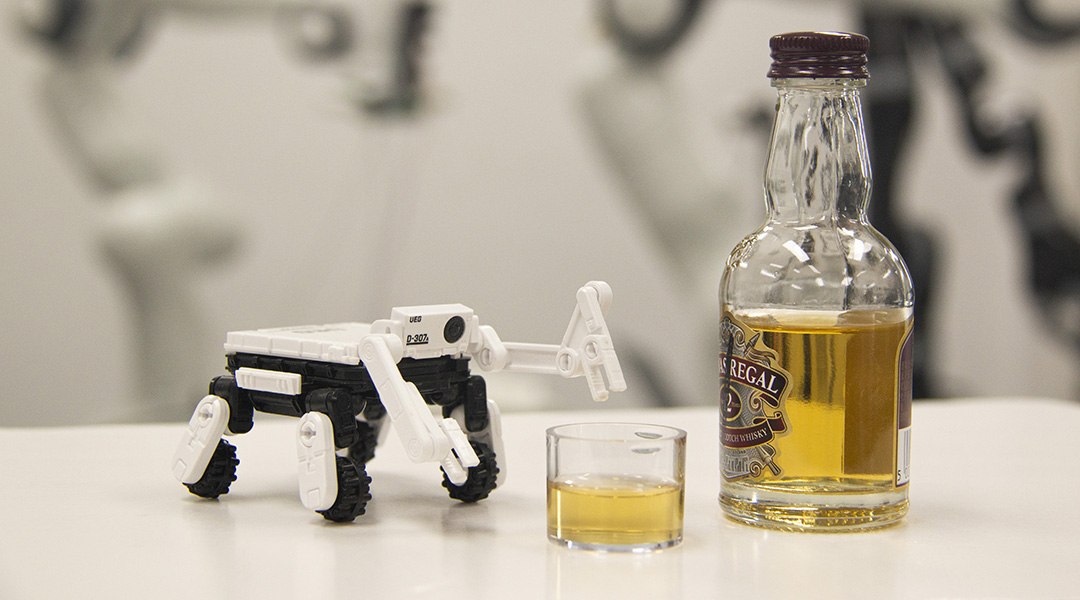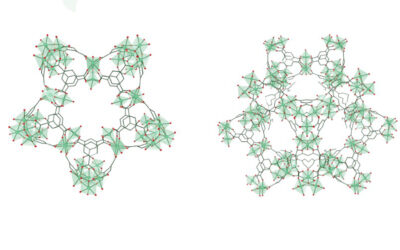Artificial eyes and ears have existed since the 19th century. Cameras capture light and use it to create a two-dimensional copy of what our eyes can see; recording devices capture and replay sound in a close approximation of what our ears can hear. But artificial noses are a much more recent invention.
“Current electronic noses are still not comparable to human olfaction due to the significant disparity in the number of gas sensors versus human olfactory receptors,” wrote a team of researchers led by Chuxiong Hu from the Department of Mechanical Engineering at Tsinghua University and Na Na from the College of Chemistry at Beijing Normal University in a paper recently published in Advanced Science.
Precisely copying the capabilities of a biological nose with an artificial one is a lofty but potentially world-changing goal, with implications for medicine, food safety, environmental monitoring, and more.
Hu said his team’s strategy for building a better electronic nose was inspired by wine tasters. “One classic sniffing method chosen by a wine taster involves positioning the wine glass beneath the nose and delicately engaging in a series of quick sniffs,” he said. “This particular approach is widely acknowledged for its efficacy in optimally saturating the nasal cavity with the wine’s aroma.”
Previous electronic nose technologies, Hu said, have relied on “a singular sniff”, which may not be enough to obtain an accurate perception of an odor.
“This approach is constrained by the slow dynamic response of gas sensors,” he said. That makes it harder for an electronic nose system to achieve the same accuracy as the human olfactory system, which can identify at least 400,000 different compounds — up to one trillion by some estimates.
Sniffing like a wine taster
In the human olfactory system, the ability to identify odors depends on a complex interaction between olfactory receptors and specific odor combinations. One of the ways an electronic nose can get closer to the capabilities of a human nose is by copying the way it sniffs. To achieve this, the researchers combined fast-responding sensors with multiple rapid sniffs to mimic the sniff strategy used by wine tasters. Hu said this strategy can collect a richer spectrum of information within a brief time frame.
“[This strategy] mimics the continuous multiple sniffing behavior exhibited by humans, with enhanced gas recognition ability,” he added. In an electronic nose, Hu said multiple sniffs with an interval slightly shorter than the sensor response time help the capture and record more information about the molecules present in an odor.
“[This] transient response,” said Debajit Saha, assistant professor of biomedical engineering at Michigan State University, who was not involved in the study, “is an important response motif to consider for odor classification.” Though he added, “It may have to be adjusted for different e-noses with different types of transient response properties.”
To assess their method’s ability to distinguish between similar odors, Hu and his co-authors tested it on different types of alcohol. This is a challenging task for an electronic nose; in liquor, Hu explained, there are a limited amount of odor compounds, and they’re often masked by the smell of ethanol, the main component of most alcoholic beverages.
To identify those other compounds, an electronic nose could employ a larger number of gas sensors. Alternatively, it could use the multiple sniff strategy, which the researchers said achieved over 95% accuracy in identifying gaseous alkanes and liquors.
“The proposed method seems promising as it appears to apply to existing electronic nose devices,” said Gyuweon Jung, who holds a Ph.D. in the field of gas sensors. Jung, who was not involved in the study, said the device was also notable for its ability to tell the difference between alcoholic beverages of similar alcohol levels.
Applications in medicine
Identifying different liquors is only a proof of concept. In practice, an accurate electronic nose has other, much more significant applications. For example, electronic noses can assist in the diagnosis of certain diseases, potentially providing a non-invasive alternative to current diagnostic techniques.
“There is evidence to suggest that the breath of lung cancer patients exhibits distinct differences from that of healthy individuals,” Hu said. An accurate electronic nose could help identify the compounds present in the breath of someone with lung cancer and lead to an earlier diagnosis.
Though not included in the published research, Hu said his team has already tested their technology in this setting. “In preliminary experiments by our research team, we have successfully achieved over 95% recognition accuracy for lung cancer patients,” he said. “We believe that electronic noses will become a good assistant to doctors in the future.”
The next step for the researchers is to refine the technology for use in other applications such as detecting environmental contaminants and pathogens present in food. “Our objective is to enable future electronic noses to sniff as flexibly as humans and other mammals,” he said, adding that one day electronic noses will also help humanoid robots sense their surroundings in richer, more human-like ways.
Reference: L. Liu, C. Hu, et al., Sniffing like a Wine Taster: Multiple Overlapping Sniffs (MOSS) Strategy Enhances Electronic Nose Odor Recognition Capability, Advanced Science (2023). DOI: 10.1002/advs.202305639

















